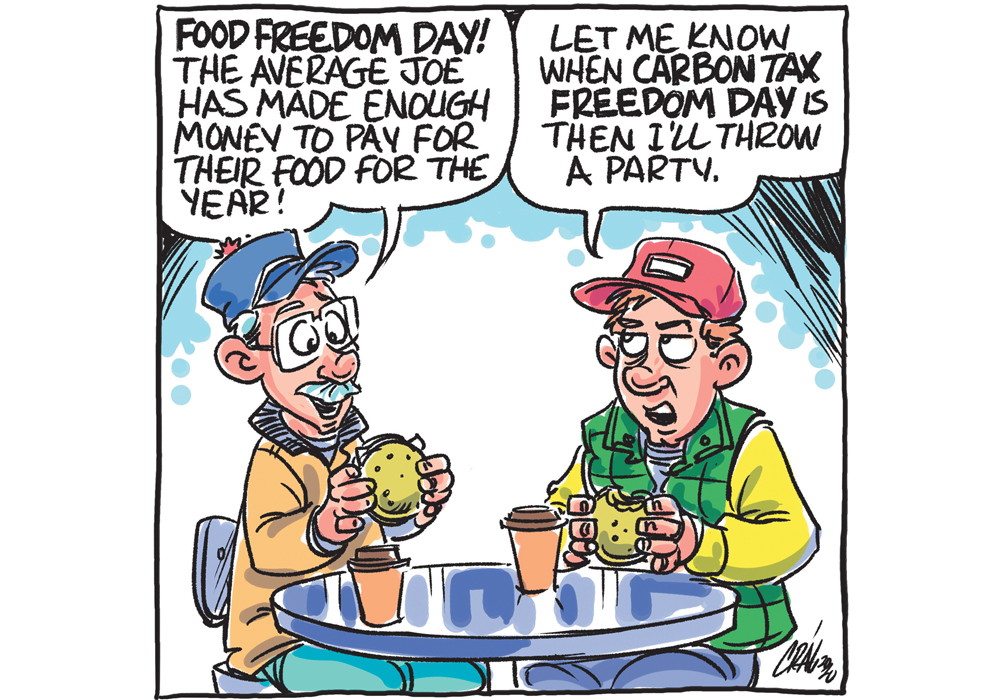The Canadian Federation of Agriculture’s proclamation of Feb. 8 as this year’s Food Freedom Day — the day in which Canadians, on average, have earned enough disposable income to pay their annual food bill — came and went as it usually does, with a statement, and relative silence.
Yet there is much to be said about this.
CFA president Mary Robinson said in a release that “Canada has one of the most efficient, safe and affordable food systems in the world, and Food Freedom Day is an excellent way for Canadians to visualize how fortunate we, as Canadians, are to have access to such a diversity of affordable food.”
Read Also

Proactive approach best bet with looming catastrophes
The Pan-Canadian Action Plan on African swine fever has been developed to avoid the worst case scenario — a total loss ofmarket access.
Well said.
Indeed, this time of year is when we celebrate our food system. World Pulses Day was Feb. 10 and Canada’s Agriculture Day was Feb. 11. It is important to note that Canadians are more fortunate in this sense than they might realize.
The average Canadian household spends 10.9 percent of its disposable income on food. That is less than most of the 36 states in the Organization for Economic Co-operation and Development, whose members are considered developed countries. Canada is among the lowest eight countries in the world for household food expenditures.
This is important because percentage of disposable income spent on food is a key indicator of a nation’s prosperity and its citizens’ health.
In the United States, over a recent 25-year period, the poorest 20 percent of households spent up to 43 percent of their disposal income on food, compared to the wealthiest 20 percent who spent up to nine percent. In Canada, up to four million people are thought to be food insecure due to low incomes.
These are two very rich countries that could be much more prosperous if so many were not going hungry.
Access to an abundance of nutritious food is also a key element of economic output and life expectancy. To that end, more than 70 percent of what Canadians buy at the grocery store is produced domestically. That gives Canadians an advantage over many other countries.
More than 820 million people worldwide do not have enough to eat. Much of that is due to a lack of food security, meaning a lack of locally available nutritious food, but cost is a factor. It’s thought the nutrient deficiencies result in lost gross domestic product of up to three percent worldwide (about $1.7 trillion).
Canadian farmers do their part by producing nutritious food at affordable prices for export and domestic consumption.
Look at what Canada exports: 70 percent of our soybeans and pork, 75 percent of our wheat, 90 percent of our canola, 95 percent of our pulses and half of our beef.
Affordable, nutritious food is the basis of Canada’s wealth. That should be kept in mind in debates over farm practices in a country that produces among the safest, highest quality and affordable food in the world.
In that vein, the creation of the Simpson Centre for Agricultural and Food Innovation and Public Education at the University of Calgary is a welcome development. Made possible by a $5-million donation by rancher John Simpson, the school will focus on trade policy, environment and climate change, agriculture as a major resource sector, and food and agriculture technology.
The centre’s research will be “aggressively disseminated” to reach decision-makers, the general public and international audiences, and “informing best practices in the sector itself.”
Hear, hear! This is much needed. Acknowledging and improving Canadian agriculture’s impact is a full-time task.
Karen Briere, Bruce Dyck, Barb Glen, Brian MacLeod and Michael Raine collaborate in the writing of Western Producer editorials.

















